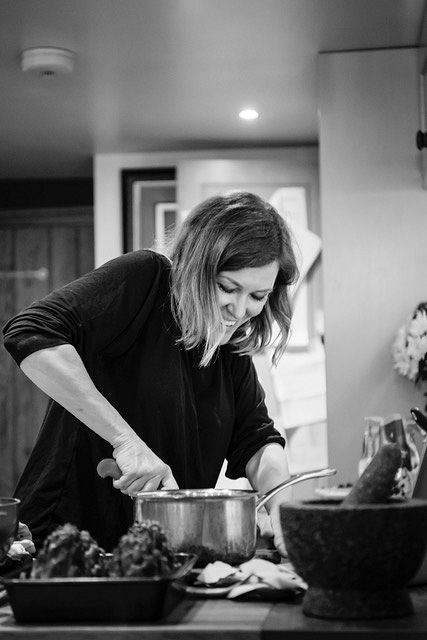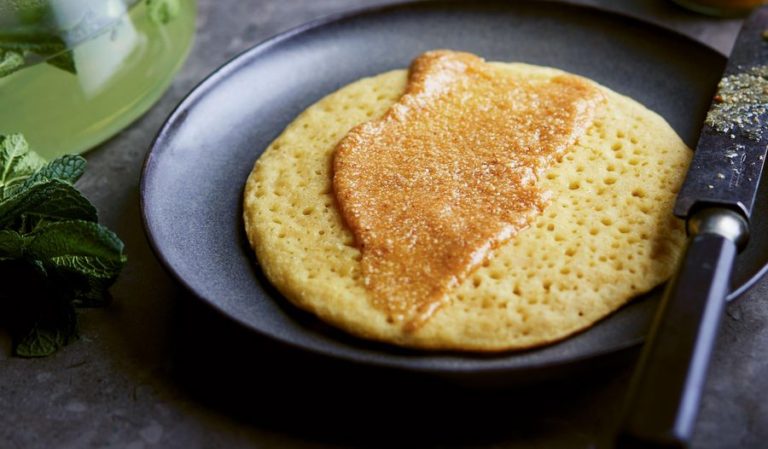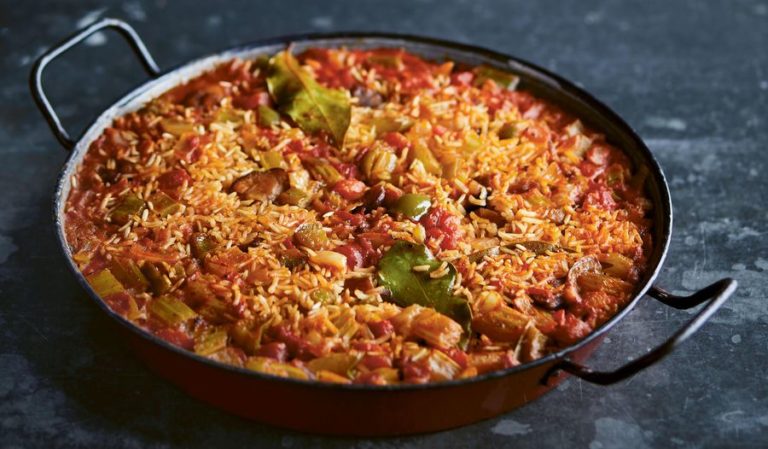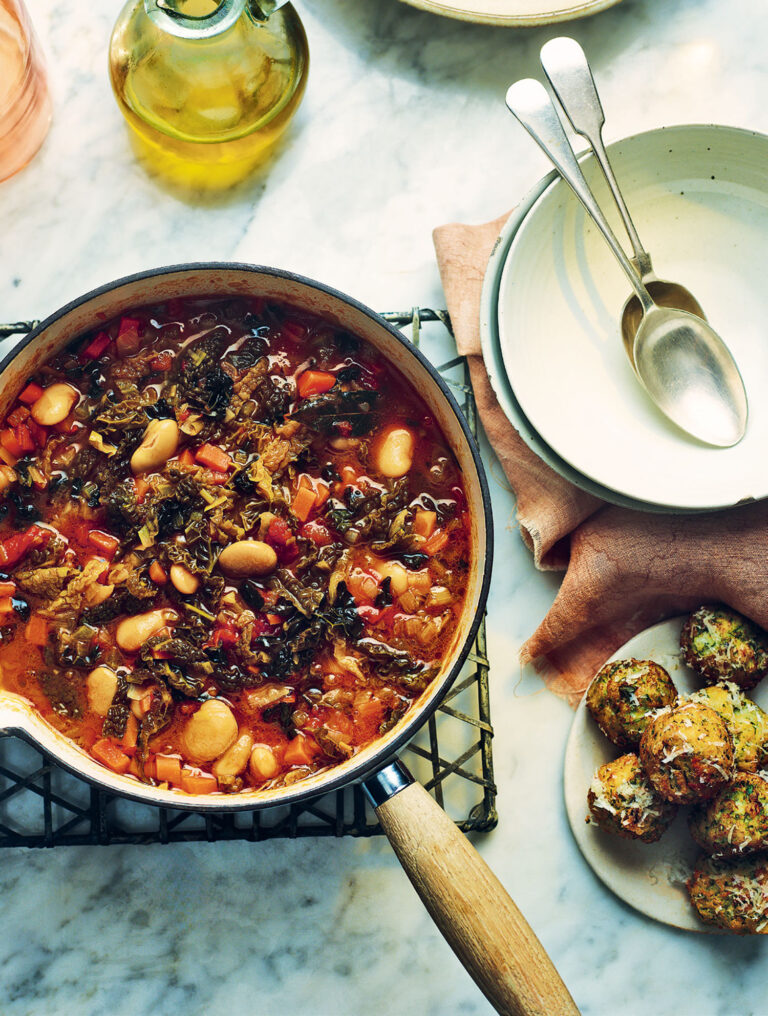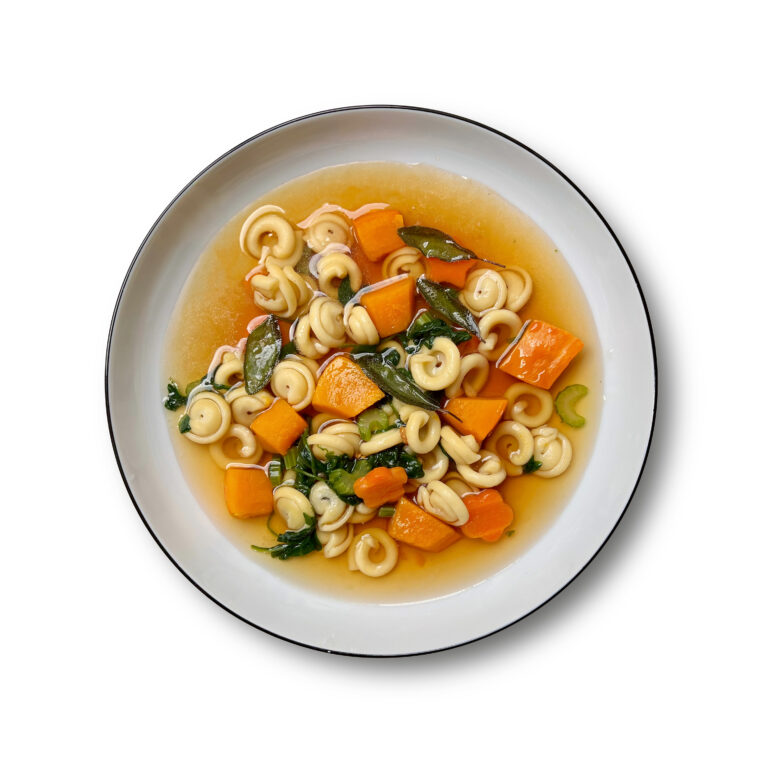Cawl
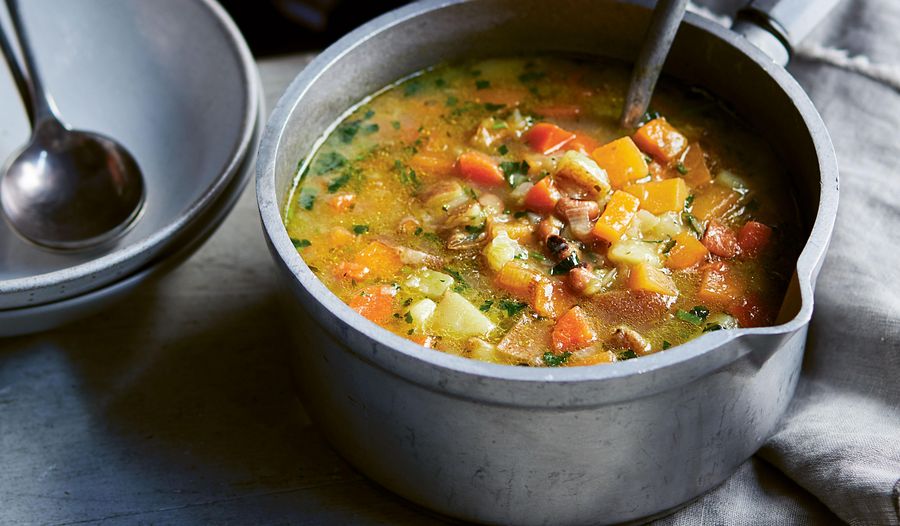
Cerys Matthews Welsh Cawl is a hearty and warming soup recipe packed with vegetables. Serve with dumplings for a robust meal, or simply enjoy with some crusty bread.
Introduction
Years and years ago, when cauldrons simmered in the fireplace, you might add vegetables as they became available. And while you were working in the fields, it kept doing its magic, so, when you returned, famished, it was ready to dish out. This version has no meat, but I've included a non-vegetarian step at the end.
Ingredients
| 1 | onion, chopped |
| 1 | leek, chopped |
| olive oil | |
| salt and pepper | |
| 1 | large carrot, chopped |
| 1 | large parsnip, chopped |
| 400g | swede, chopped |
| 400g | potato, chopped |
| 2 | sprigs of thyme |
| 1.2l | water (plus vegetable stock cube optional) |
| 1 x 400g | cooked butter beans, with their liquid (or other peas/beans like pre-cooked chickpeas, kidney beans, black eyed peas, peas or fava beans) |
| handful | fresh parsley, chopped |
Method
Put the onions and leeks in a pan with a glug of oil and sauté with a pinch of salt until soft, 10 minutes or so.
Stir in the rest of the peeled, chopped vegetables, the herbs and the water, bring to a boil, then turn down heat and simmer until the vegetables are all tender, around 30 minutes.
Add the butter beans with the liquid and stir through. Keep at a gentle simmer, season to taste. (At this point, it's technically ready, but can be left now at the lowest setting, to wait for you.)
Serve in bowls (traditionally wooden ones, with wooden spoons, but hey), sprinkle with chopped parsley. On the table, offer a chunk of cheese and the grater, and the salt and pepper.
Non-veg option: Add small pieces of browned lamb (fried up quickly in hot oil before you fry the onion, remove from the pan and set aside, adding back in at step 2). Traditionally, cheap cuts like the beck were used, so the longer you simmer, the less tough the meat; taste to see and keep adding water if it gets too thick and risks catching at the bottom.
Option: To make easy dumplings to go with the dish, see p. 155 of Where the Wild Cooks Go.
Reviews
3 Ratings
Have you tried this recipe? Let us know how it went by leaving a comment below.
Thank you for your rating. Our team will get back to any queries as soon as possible.
Please note: Moderation is enabled and may delay your comment being posted. There is no need to resubmit your comment. By posting a comment you are agreeing to the website Terms of Use.
